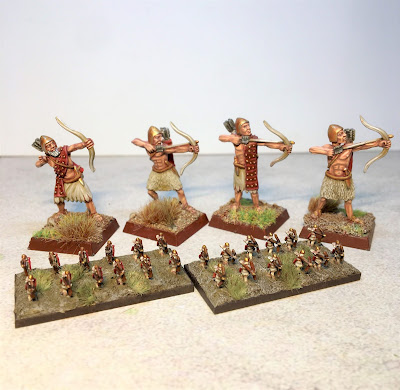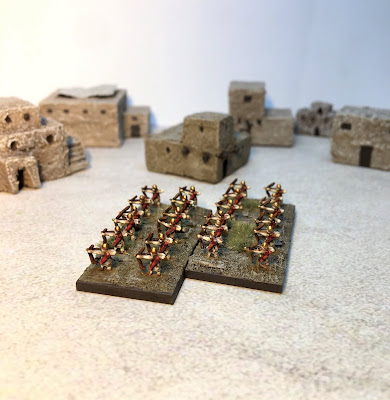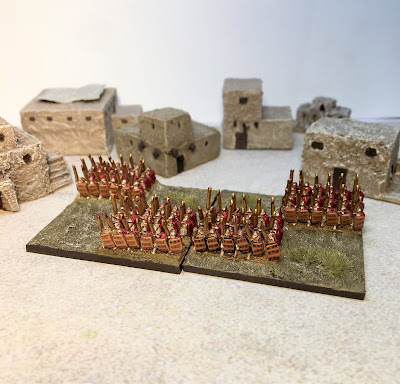Today’s blog post takes us straight into the world of 6mm. I’ve wanted to paint some Hail Caesar armies in 6mm for a long time—the sheer visual appearance of massed armies at this scale just can’t be beat, and the amazing work by IrregularWars and other 6mm-dedicated blogs has been a constant source of inspiration. Overwhelmed with possibility—Romans? Carthaginians? Egyptians?—I decided to let history be my guide, and start at the very beginning, with the Sumerians.
Located in what is now Southern Iraq, Sumer has often been claimed as the origin of civilisation. Among the first to develop writing and urbanisation, the Sumerians fascinate me, especially their language - an isolate whose linguistic affiliations still cause disagreement. In fact, much about the origins of the Sumerians is still debated; no wonder fringe theorists still turn to early Mesopotamia for evidence of ancient aliens! The Sumerians also provide quite an easy ‘in’ to 6mm wargaming, as by their very nature such early armies are both smaller, but also quite limited in scope.
Whenever I begin a new project, I like to start with a quick unit both to get my eye in, but also to see how the colours will work at that scale. This is especially important at 6mm, as at this size it’s about contrast and ‘legibility’ from a distance; there’s no time (or physical space on the model!) for endless meticulous detail. So, first off block is a unit of archers:
Although several companies make 6mm Sumerians, it seems that none make archers, despite their being fundamental to armies of the period. Fortunately, at 6mm scale things are quite forgiving and it becomes easier to substitute in other figures that look ‘right’ from a distance. These are Heroics and Ros archers, from their Etruscan light infantry pack; painted with copper helmets and sheepskin kilts, they look just the job.
Of course, no Sumerian army is complete without massed ranks of spearmen, so this unit was next off the block. These are from Irregular’s beautiful 6mm Sumerian range:
There’s some discussion
when it comes to Sumerian military equipment. Surviving depictions such as the ‘Standard
of Ur’ and the ‘Vulture Stela’ (below) show warriors in helmets, kilts, and long,
studded cloaks. Finds from city of Ur suggest that the helmets were copper with
a leather cap below, and modern depictions conventionally interpret the kilt as
sheepskin, and the cloak as copper-studded leather. However, some instead see the
cloak as felt or cloth. To avoid potential controversy, I’ve decided to plump for
the ‘traditional’ depiction of Sumerians—copper helmets, dark red leather
cloaks and felt kilts. If nothing else, I like the visual contrast of these
three core colours. Whether the long shields of spearmen were wicker or leather
is also uncertain; the colour I’ve chosen could handily be interpreted as
either…
Depictions like the Vulture stela show massed, phalanx-style ranks. It has been proposed that, since the Sumerian number system was both decimal and sexagesimal, formations were based on this principle, with a basic ‘unit’ comprising 60 soldiers. Certainly, the Vulture stela seems to show a column 10 by 6! Since the Irregular spearmen are in ranks of 6, this works quite nicely.











We like the way you base your spearmen!
ReplyDeleteGood work Ben!
:-)
Thanks so much!
ReplyDelete